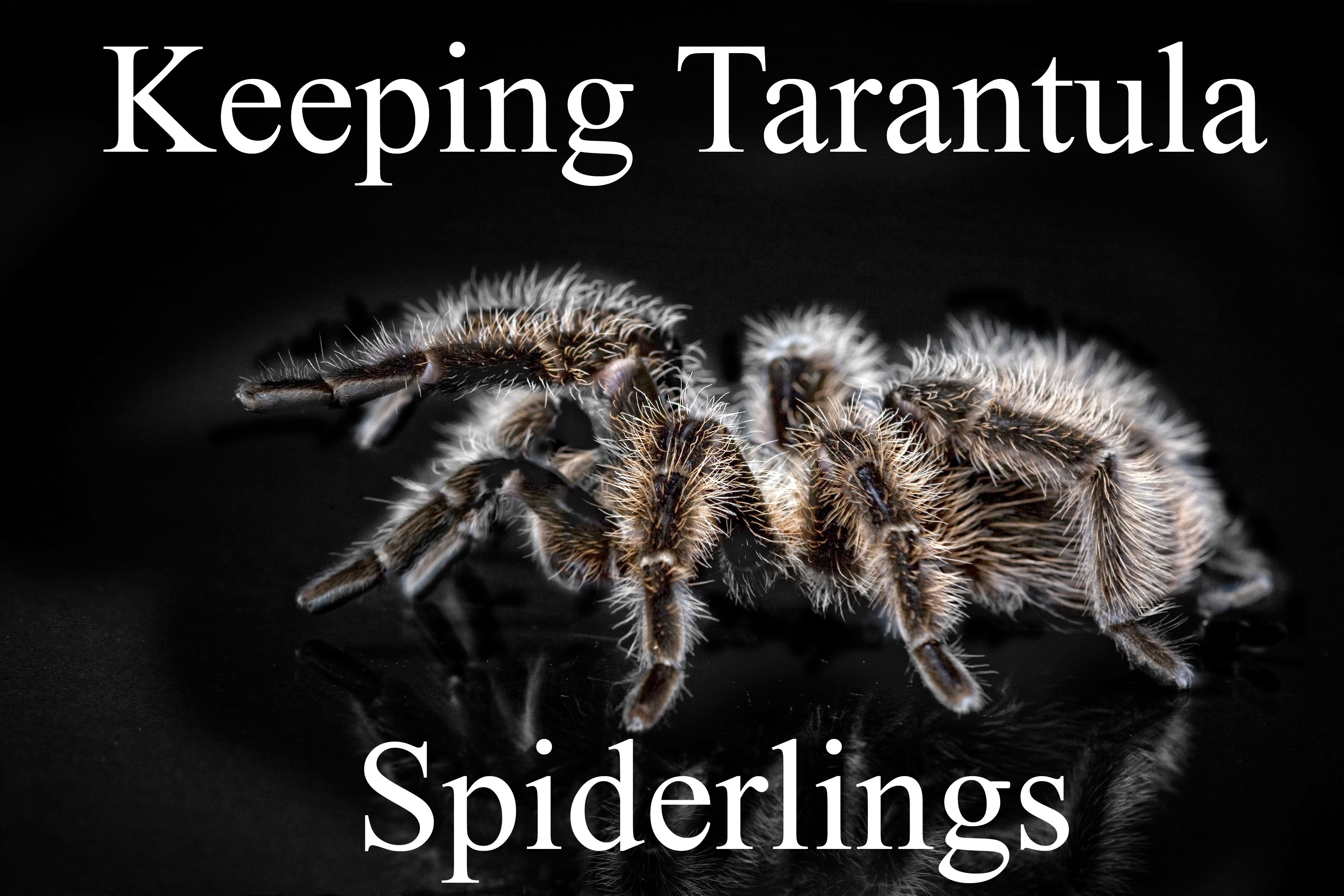How to Keep Spiderling Tarantulas as Pets - Keeping Exotic Pets
The following article has been taken from my blog over at Pet Care Sheet where I give information on how to care for exotic pet species.

Why Buy Taratnula Spiderlings?
Baby tarantulas or spiderlings aka “slings”, are a cheaper introduction to the tarantula keeping hobby than buying sub adult or adults. Keeping spiderlings also gives you the opportunity to watch your pet tarantula grow from a sling into an adult. This is very rewarding compared to buying an adult. Growing out a spiderling will allow you to witness the different colour changes a tarantula can go through as it grows and matures.
Due to the low price barrier to entry and the rewarding side of keeping slings, many tarantula keepers choose to buy spiderlings.
However, keeping small tarantulas does come with its disadvantages as they will be more sensitive to the wrong conditions and you will have to feed them smaller food items. As long as you can offer smaller prey and give your spiderling the correct conditions, you will soon raise your small sling into an impressive adult tarantula.
Housing Tarantula Spiderlings
As with housing adult tarantulas, terrestrial ground dwelling tarantulas will need a cage that is longer than it is tall while arboreal tree dwellings tarantulas will require a tall terrarium.
Housing spiderling tarantulas is not difficult. They can be kept in deli cups, jam jars, small plastic tubs. There are even cages designed for keeping spiderlings and come in different sizes to house the small spiders at different stages of growth. I have a few Critter boxes by Lucky Reptile. They provide good visibility, ventilation and even have a locking lid. Additionally, there is a little stopper on the top of the Critter Box to allow you to easily feed your spiderling by dropping the food in from the top. These are ideal for housing spiderlings however, they are more expensive than the cheaper alternatives such as deli cups.
Water
Spiderlings do not need a water dish. I prefer to keep the substrate slightly moist. When spiderlings need water they will pick up the moist substrate and drink from it. You can also add a small piece of moistened sponge to give the sling a chance to drink.
Feeding Spiderlings
Spiderlings, due to their small size will require smaller prey items. You can buy pinhead crickets and fruitflies are great for feeding to small spiderlings and they are easily found at your local live food supplier.
I like to breed my own cockroaches to feed my pet slings. I use red runner cockroaches. These contain less chitin than cockroaches and they are superior to small dubia cockroaches that have a hard exoskeleton. Small tarantulas can find it difficult to pierce the exoskeleton. Red runners on the other hand, are soft and easy for the sling to feed on. Check out my guide to find out how to breed live food for pets.
As your spiderling grows you should also increase the size of the food items you give to your spiderlings.
The amount you feed depends on how fast you want your spiderling to grow as well as how often your tarantula is willing to eat. You can feed your sling once every two weeks, every week or even as often as 3+ times per week. Feeding more frequently will result in a faster growing tarantula.
Keep a record of when your spiderling eats and does not. This way you will be able to create a feeding schedule that suits your slings.